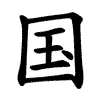Definify.com
Definition 2026
飛
飛
See also: 飞
Translingual
| Stroke order | |||
|---|---|---|---|

| |||
| Japanese stroke order | |||
|---|---|---|---|

| |||
Han character
飛 (radical 183 飛+0, 9 strokes, cangjie input 弓人竹廿人 (NOHTO), four-corner 12413, composition ⿻𠃧⿰亻丨)
- Kangxi radical #183, ⾶ (“fly”).
Descendants
- Index:Chinese radical/飛
- 騛, 𩙺
References
- KangXi: page 1415, character 14
- Dai Kanwa Jiten: character 44000
- Dae Jaweon: page 1938, character 1
- Hanyu Da Zidian: volume 7, page 4513, character 1
- Unihan data for U+98DB
Chinese
| trad. | 飛 | |
|---|---|---|
| simp. | 飞 | |
Glyph origin
| Historical forms of the character 飛
| |||
|---|---|---|---|
| Oracle bone script | Bronze inscriptions | Large seal script | Small seal script |
 |
 |
 |
 |
| Characters in the same phonetic series (飛) (Zhengzhang, 2003) | |
|---|---|
| Old Chinese | |
| 飛 | *pɯl |
| 騛 | *pɯl |
Pictogram (象形) : looks like a bird flying upwards.
In modern form, resembles a tasseled 升 (shēng).
Etymology
Area word:
- Proto-Sino-Tibetan *bjar ~ *p(i/u)r (“to fly”) > Tibetan འཕུར་བ ('phur ba),
- Proto-Mon-Khmer *par (“to fly”) > Old Mon ပဝ် (pɔ); Proto-Vietic *pər (“to fly”) (> Vietnamese bay).
Cognate with 翂 (OC *pɯn, “appearance of birds flying slowly”), 𦐈 (“fly, soar”), 奮 (OC *pɯns, “spread wings and fly”).
Pronunciation
- Mandarin
- Cantonese (Jyutping): fei1
- Hakka (Sixian, PFS): pî / fî
- Min Dong (BUC): buŏi / hĭ
- Min Nan
- Wu (Wiktionary): fi (T1)
- Mandarin
- (Standard Chinese, Beijing)+
- Pinyin:
- Zhuyin: ㄈㄟ
- Wade-Giles: fei1
- Gwoyeu Romatzyh: fei
- IPA (key): /feɪ̯⁵⁵/
- (Standard Chinese, Beijing)+
- Cantonese
- (Standard Cantonese, Guangzhou)+
- Jyutping: fei1
- Yale: fēi
- Cantonese Pinyin: fei1
- IPA (key): /fei̯⁵⁵/
- (Standard Cantonese, Guangzhou)+
- Hakka
- (Sixian, incl. Miaoli and Meinong)
- Pha̍k-fa-sṳ: pî / fî
- Hakka Romanization System: bi´ / fi´
- Hagfa Pinyim: bi1 / fi1
- IPA: /pi²⁴/, /fi²⁴/
- Note: pî - vernacular; fî - literary.
- (Sixian, incl. Miaoli and Meinong)
- Min Dong
- (Fuzhou)
- Bàng-uâ-cê: buŏi / hĭ
- IPA (key): /pui⁵⁵/, /hi⁵⁵/
- Note: buŏi - colloquial; hĭ - literary.
- (Fuzhou)
- Min Nan
- (Hokkien: Zhangzhou, Kaohsiung, Tainan, Yilan, Taichung)
- Pe̍h-ōe-jī: poe
- Tâi-lô: pue
- Phofsit Daibuun: poef
- IPA (Zhangzhou): /pue⁴⁴/
- IPA (Kaohsiung): /pue⁴⁴/
- (Hokkien: Xiamen, Taipei, Magong, Hsinchu)
- Pe̍h-ōe-jī: pe
- Tâi-lô: pe
- Phofsit Daibuun: pef
- IPA (Xiamen): /pe⁴⁴/
- IPA (Taipei): /pe⁴⁴/
- (Hokkien: Quanzhou, Lukang, Sanxia, Kinmen, Hsinchu)
- Pe̍h-ōe-jī: per
- Tâi-lô: per
- IPA (Quanzhou): /pə³³/
- (Hokkien: Xiamen, Quanzhou, Zhangzhou, mainstream Taiwanese)
- Pe̍h-ōe-jī: hui
- Tâi-lô: hui
- Phofsit Daibuun: huy
- IPA (Xiamen): /hui⁴⁴/
- IPA (Quanzhou): /hui³³/
- IPA (Zhangzhou): /hui⁴⁴/
- IPA (Taipei): /hui⁴⁴/
- IPA (Kaohsiung): /hui⁴⁴/
- (Hokkien: Taipei, Kaohsiung, Hsinchu, Taichung, Magong)
- Pe̍h-ōe-jī: hoe
- Tâi-lô: hue
- Phofsit Daibuun: hoef
- IPA (Taipei): /hue⁴⁴/
- IPA (Kaohsiung): /hue⁴⁴/
- Note: poe, pe, per - vernacular; hui - literary; hoe - only used in 飛行機/飞行机.
- (Teochew)
- Peng'im: buê1 / hui1
- Pe̍h-ōe-jī-like: pue / hui
- IPA (key): /pue³³/, /hui³³/
- Note: buê1 - colloquial; hui1 - literary.
- (Hokkien: Zhangzhou, Kaohsiung, Tainan, Yilan, Taichung)
- Wu
- (Shanghainese)
- Wiktionary: fi (T1)
- IPA (key): /fi⁵³/
- (Shanghainese)
| Rime | |
|---|---|
| Character | 飛 |
| Reading # | 1/1 |
| Initial (聲) | 幫 (1) |
| Final (韻) | 微 (21) |
| Tone (調) | Level (Ø) |
| Openness (開合) | Closed |
| Division (等) | III |
| Fanqie | 甫微切 |
| Reconstructions | |
| Zhengzhang Shangfang |
/pʉi/ |
| Pan Wuyun |
/pʷɨi/ |
| Shao Rongfen |
/piuəi/ |
| Edwin Pulleyblank |
/puj/ |
| Li Rong |
/piuəi/ |
| Wang Li |
/pĭwəi/ |
| Bernard Karlgren |
/pwe̯i/ |
| Expected Mandarin Reflex |
fēi |
| Baxter-Sagart system 1.1 (2014) | |
|---|---|
| Character | 飛 |
| Reading # | 1/1 |
| Modern Beijing (Pinyin) |
fēi |
| Middle Chinese |
‹ pjɨj › |
| Old Chinese |
/*Cə.pə[r]/ (dialect: *-r > *-j) |
| English | fly (v.) |
Notes for Old Chinese notations in the Baxter-Sagart system: * Parentheses "()" indicate uncertain presence; | |
| Zhengzhang system (2003) | |
|---|---|
| Character | 飛 |
| Reading # | 1/1 |
| No. | 3115 |
| Phonetic component |
飛 |
| Rime group |
微 |
| Rime subdivision |
1 |
| Corresponding MC rime |
猆 |
| Old Chinese |
/*pɯl/ |
Definitions
飛
- to fly
- to move in the sky; to hover, to flutter, to dart
- to disappear
- fast; rapid; swiftly
- very; extremely
- groundless; unfounded
- unexpected; accidental
- flying; suspending
Compounds
Derived terms from 飛
|
|
|
Japanese
Noun
- (abbreviation of 飛車, "hisha")
- This term needs a translation to English. Please help out and add a translation, then remove the text
{{rfdef}}.
Kanji
飛
Readings
- Goon: ひ (hi)
- Kan’on: ひ (hi)
- Kun: とぶ (飛ぶ, tobu), とばす (飛ばす, tobasu)
- Nanori: あす (asu), とび (tobi), たか (taka)
Compounds
|
Korean
Hanja
飛 • (bi) (hangeul 비, McCune-Reischauer pi, Yale pi)
- This term needs a translation to English. Please help out and add a translation, then remove the text
{{rfdef}}.
Vietnamese
Han character
飛 (phi)
- This term needs a translation to English. Please help out and add a translation, then remove the text
{{rfdef}}.